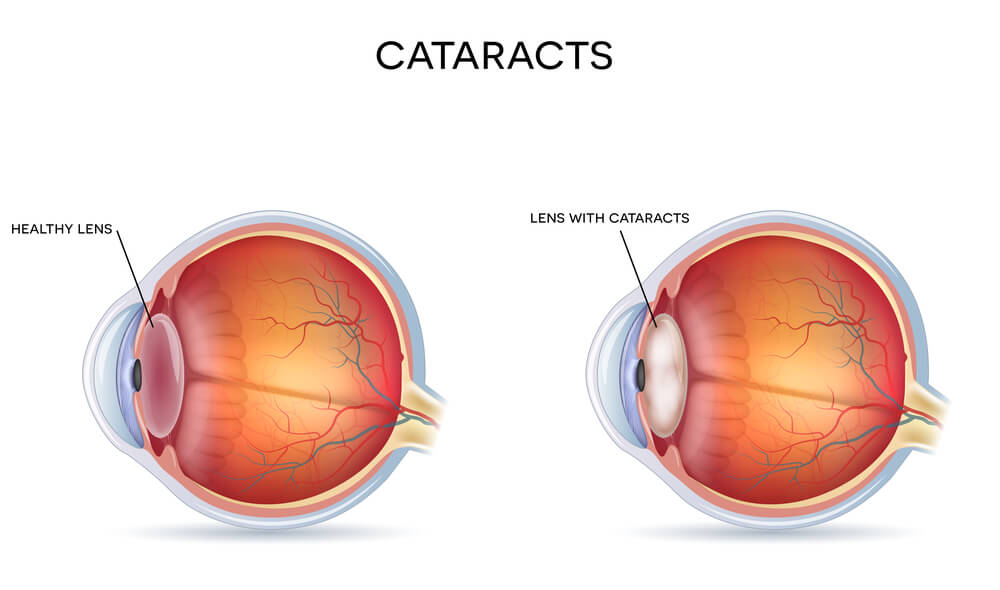Can I Have Cataracts More Than Once?
April 30, 2024
Cataracts are an incredibly prevalent eye condition. While you can technically develop cataracts at any age, most develop due to aging.
Once you're over 40, your risk of developing cataracts increases significantly. However, turning 40 doesn't mean that you'll instantly have cataracts.
Even if you have a cataract, you may not realize it initially because they don't usually have noticeable symptoms. Cataracts take many years to progress and take a long time to form.
Fortunately, there is a way to treat cataracts. The only way to treat cataracts is by having them removed during cataract surgery.
But many cataract patients wonder if they can get cataracts more than once. Technically, you cannot.
But to understand why and why there is a phenomenon often called a "secondary cataract," you first need to understand what cataracts are and how cataract surgery works. Keep reading to learn why you cannot have cataracts more than once and what that means for your vision!
What are Cataracts?
 Cataracts form when the eye's natural lens, which is supposed to be clear, becomes cloudy. Most cataracts form due to aging.
Cataracts form when the eye's natural lens, which is supposed to be clear, becomes cloudy. Most cataracts form due to aging.
If you have a cataract, it makes your natural lens more opaque over time, which can take many years before it causes significant vision loss or visual impairment. When they do cause vision loss, there are a few symptoms.
The most common symptoms of cataracts include blurry vision, poor night vision, glare, halos, and light sensitivity. The more advanced your cataracts are, the worse these symptoms become.
Since cataracts take so long to cause symptoms, cataract surgeons recommend cataract surgery only once symptoms affect quality of life. If you're no longer able to wash dishes, play with your grandchildren, or take part in your favorite hobbies because of your impaired vision, this is usually when it's a good time to consider cataract surgery.
What is Cataract Surgery?
Cataract surgery is the only way to treat cataracts. But the good news is that the procedure can restore all vision lost to cataracts.
The procedure works because it removes the cataract entirely. However, removing the natural lens is the only way to remove the cataract.
Cataract surgery also includes replacing your natural lens with an artificial lens called an intraocular lens (IOL). IOLs come in different varieties, but all are made from manufactured materials that cannot become cloudy like a natural lens.
Once you have cataract surgery and have an IOL that replaces your natural lens, you cannot develop a cataract.
"Secondary Cataracts"
Sometimes, after having cataract surgery, patients develop symptoms similar to those with cataracts. This is due to a condition called posterior capsular opacification.
Posterior capsular opacification can be a side effect of the healing process after cataract surgery. This condition is sometimes called a "secondary cataract," but this name is a misnomer.
Posterior capsular opacification is not a cataract. It's caused by cloudy patches in the lens capsule, the thin membrane that holds your eye's natural lens, and, after cataract surgery, your IOL.
Posterior capsular opacification doesn't go away on its own, so some patients do worry that they've developed cataracts again. However, not only is it not a cataract, but it's also straightforward to treat.
The condition doesn't resolve independently, but treatment doesn't require surgery. Instead, your ophthalmologist at Washington Eye Specialists can perform it in-office.
"Secondary Cataract" Treatment
 The treatment for posterior capsular opacification is called a YAG laser capsulotomy. The procedure is simple, minimally invasive, and requires no surgery.
The treatment for posterior capsular opacification is called a YAG laser capsulotomy. The procedure is simple, minimally invasive, and requires no surgery.
Your ophthalmologist will likely be able to treat you right away after diagnosing your "secondary cataract," as it doesn't require any preparation or recovery time like cataract surgery does.
The treatment begins by administering two different kinds of eye drops. They first numb the eye, which is the same kind used to numb the eyes during eye procedures like cataract surgery.
The second kind of eye drop dilates the eyes. These are the same drops used to dilate the eyes during an eye exam.
The numbing drops ensure that you won't feel anything during the procedure. Your eyes will be dilated so your ophthalmologist can see into your eye more clearly to perform the capsulotomy.
Once your eyes are prepped, treatment for posterior capsular opacification takes little time. A special laser called a YAG laser is used to make a small opening in the lens capsule.
The laser is simply shined through your dilated pupil, creating this opening without damaging any of the surrounding tissue. This allows light to enter the lens capsule, alleviating the cataract-like symptoms caused by posterior capsular opacification.
After the treatment is over, your eyes may feel tender for a few hours once the numbing eye drops wear off. But they'll feel normal again in a day or two, meaning there's virtually no recovery period.
There's no reason to worry about developing cataracts twice because it isn't possible. What people sometimes call a "secondary cataract" is not only not a cataract but is also quite easily treated.
Do you think you may need cataract surgery? Find out more about cataracts by requesting a cataract evaluation at Washington Eye Specialists in Washington, DC.



